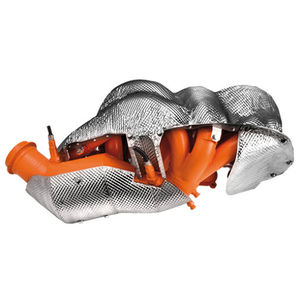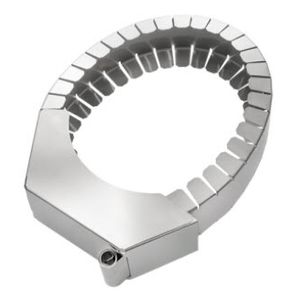
High-temperature thermal shield Tmax-DryTec

Add to favorites
Compare this product
Characteristics
- Options
- high-temperature
Description
„Wet insulation is no insulation at all...“
Fibrous insulating material can easily get soaked in wet conditions or during engine washing. The result is a delayed light-off performance as the system loses useful heat in drying the fibre. Fuel consumption and emissions are therefore especially high during this phase. The durability of the insulation system is also adversely affected due to the salt, dirt deposits and water accumulating in the fibre. Particularly affected are insulation systems positioned under the vehicle e.g. around the DPF-, SCR-Modules, silencers or thermo-acoustic insulations. This latter type are defined by a perforated outer shell and therefore easily damaged and prone to lose their effectiveness.
Tmax-DryTec. The first high-temperature insulation that also protects against water ingress.
Tmax-DryTec protects fibrous insulating material against water ingress giving it increased performance and longer life. Simpler compliance with future emission standards, lower fuel consumption, and an easier installation. Tmax-DryTec can be employed on all fibres used by Thermamax.
Extended durability and improved insulation performance
The effects of water spray mean that various salts, dirt and dust particles can reach the insulation. The so-called hydrophobic fibre material rejects the water and prevents deposits forming. The fibre stays clean, extending its durability and ensuring the maximum insulating efficiency. An additional benefit is the avoidance of expensive, close-tolerance welding that would otherwise be required in manufacturing the insulation system.
Catalogs
*Prices are pre-tax. They exclude delivery charges and customs duties and do not include additional charges for installation or activation options. Prices are indicative only and may vary by country, with changes to the cost of raw materials and exchange rates.

















